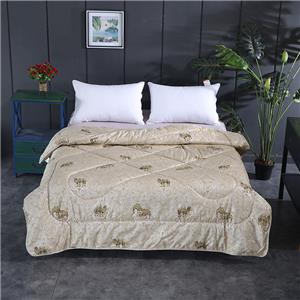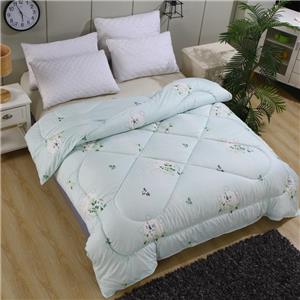History of Lushan Silk
the earliest evidence of silk was found at the sites of Yangshao culture in Xia County, Shanxi, where a silk cocoon was found cut in half by a sharp knife, dating back to between 4000 and 3000 BC. The species was identified as Bombyx mori, the domesticated silkworm. The earliest extant example of a woven silk fabric is from 3630 BC, used as wrapping for the body of a child. The fabric comes from a Yangshao site in Qingtaicun at Rongyang, Henan. which is only 100 kilometers away from Lushan.Lushan silk was very famous in Tang dynasty.The use of silk within China was not confined to clothing alone, and silk was used for a number of applications, such as writing. Within clothing, the color of silk worn also held social importance.
Silk cultivation spread to Japan around 300 AD, and, by 552 AD, the Byzantine Empire managed to obtain silkworm eggs and were able to begin silkworm cultivation; the Arabs also began to manufacture silk at the same time. As a result of the spread of sericulture, Chinese silk exports became less important, although they still maintained dominance over the luxury silk market. The Crusades brought silk production to Western Europe, in particular to many Italian states, which saw an economic boom exporting silk to the rest of Europe. Developments in manufacturing technique also began to take place during the Middle Ages (5th to 15th centuries) in Europe, with devices such as the spinning wheel first appearing at this time. During the 16th century, France joined Italy in developing a successful silk trade, though the efforts of most other nations to develop a silk industry of their own were unsuccessful.
The Industrial Revolution changed much of Europe's silk industry. Due to innovations in the spinning of cotton, cotton became much cheaper to manufacture, leading to cotton production becoming the main focus for many manufacturers, and causing the more costly production of silk to shrink. New weaving technologies, however, increased the efficiency of producing silk cloth; among these was the Jacquard loom, developed for the production of highly detailed silks with embroidery-like designs. An epidemic of several silkworm diseases at this time caused production to fall, especially in France, where the industry never fully recovered.
in the 20th century, Japan and China regained their earlier dominant role in silk production, and China is now once again the world's largest producer of silk. The rise of new imitation silk fabrics, such as nylon and polyester, has reduced the prevalence of silk throughout the world, being a cheaper and easier to care for alternative. Silk is now once again thought of as a luxury good, with a greatly reduced importance compared to its historical heyday.




